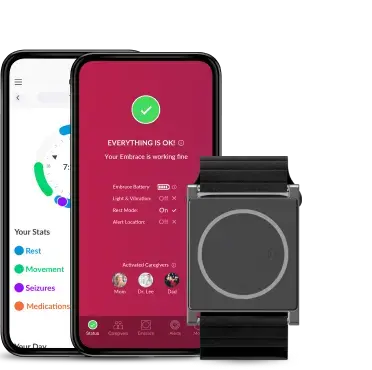From SUDEP Awareness to SUDEP Action: October 23rd for C. Patrick Brown, MD
I’ll be honest; I was at first a bit reluctant to write this blog post. Today, October 23rd is SUDEP Action Day (previously SUDEP Awareness Day). Perhaps, in some way, the name shuffling speaks to the reality that we are still learning how to comfortably talk about SUDEP, or Sudden Unexpected Death in Epilepsy. Perhaps, my hesitancy to write speaks to the discomfort even more. I like the idea, though, that we’re past a mere time of awareness and heading into a season of action where SUDEP is concerned.
As doctors, I’d like to think that we’re finally getting better at talking about SUDEP with our patients, mostly because families have demanded that we do better. And I know that we still have a long way to go. As a pediatric epileptologist, I’ve seen my own practice evolve over the years, from failing to mention SUDEP to some patients because I deemed the risks were relatively low (and I didn’t want to worry an already worried sick mother) to now trying to present all families with the SUDEP facts and knowledge they deserve. For years, around the world, far too many families reported that after the heartbreaking tragedy of losing a loved one to SUDEP, what made it even worse was that no one had even so much as warned them that SUDEP existed. We can do better.
For many of us in the epilepsy community, this day is first and foremost a day of remembrance, a memorial day as we remember our loved ones whose lives were snatched from us…often right in their prime. SUDEP often strikes those between ages 19-40, we’ve come to learn. Today (and every day, really) we remember.
Too many of us have stories to tell. My story is of a friend from college who died of SUDEP only a few years ago while living a thriving life teaching drama in New York City. He was dearly loved and is dearly missed. Even one life lost to SUDEP is too many, but today we celebrate the lives of those we knew and loved and lost. Their memories will shine on.
For many of us living with epilepsy, today is a day to make sure that we are doing all that we can to reduce our risk of SUDEP. And yes, there is much that we can do. If you’re not sure, get acquainted with some of the facts of SUDEP listed in our other blog post.
We can and should do all that we can to obtain optimum seizure control (#AimForZero): take our medication regularly, get adequate sleep, avoid alcohol. These are things that we can do to reduce our SUDEP risk substantially. Yet still, it sometimes feels like SUDEP is lurking out there.
I hate writing that, but I’m just being honest. One in 1000 may not sound very high unless you count yourself as a member of that thousand. I know. I’m in there with you. Literally. If you’re anxious, you’re not alone. But we can be brave and informed as we stand together.
So as a doctor and a patient, I am thankful for the many physicians and researchers and organizations dedicating their energy, efforts, and resources to SUDEP research. Many of those are in this fight for personal reasons, having lost loved ones to SUDEP. You all keep it up. Your efforts will help all of us (and our families) rest better each night.
One last quick story (I promise that it’s relevant). Today, I had the chance to visit the Wright Brothers Memorial in Kitty Hawk, North Carolina, the site of the first manned airplane flight in 1903. It was truly an amazing feat of engineering that these two brothers, Orville and Wilbur, pulled off. Years and years of hard work paid off in a way that changed the world as we know it.
Just a few days ago, a Qantas airlines’ flight flew nonstop from New York to Sydney, the longest commercial flight ever. Over nineteen hours. Wilbur’s flight lasted 59 seconds. Walking the 852 feet Wilbur Wright flew on their fourth and longest flight, the wind blew the hat off my head. As I chased it across the sand dunes, I couldn’t help but be lifted by the hope that SUDEP breakthroughs are not that far away.
Where will we be in our understanding and prevention of SUDEP in the years to come? Who will our Wright Brothers be? Just how far can we fly?
Words worth reading
We do not guarantee that EpiMonitor will detect every single seizure and deliver alerts accordingly. It is not meant to substitute your current seizure monitoring practices, but rather to serve as a supplement in expediting first-response time.



